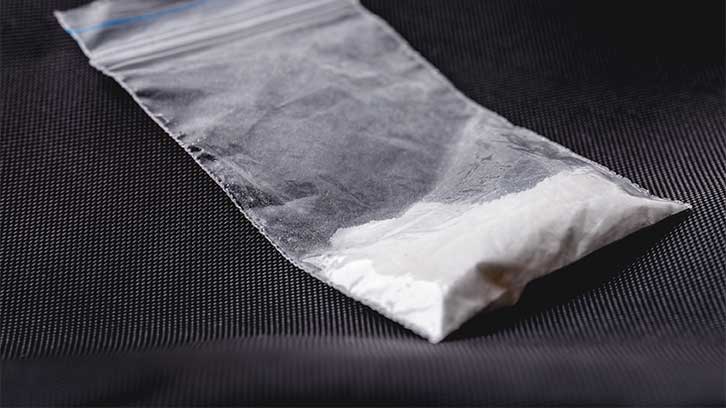What Is Heroin Cut With? | Heroin Cutting Agents & Adulterants

Medically Reviewed By: Kimberly Langdon, M.D.

Written by: Dr Jason Martin Psy.D., LCPC
Heroin, produced as either a black tar-like substance, white powder, or brown powder, is a dangerous street drug often cut with a wide variety of fillers, additives, and adulterants. Cutting agents like fentanyl increase the risks of using this illegal drug.

At any point during the long process of its creation, distribution, and sale, the opiate drug heroin can be modified, tampered with, diluted, adulterated, or counterfeited.
This often leads to dangerous and unpredictable effects when this unregulated street drug is finally administered.
Common Heroin Cutting Agents
From the time opium poppies are harvested to the eventual point at which heroin is used and sold on the street, heroin exists outside of governmental or medical regulation.
This means that pure heroin can be repeatedly cut or diluted with any number of common or experimental additives, known as cutting agents, throughout its production and distribution.
These substances are commonly mixed into pure heroin for different reasons.
Bulking Agents
Bulking agents, or fillers, are added to heroin to increase the bulk or quantity of heroin a drug dealer can sell, without changing the drug’s effects. This process directly dilutes and reduces the sample’s potency.
Common heroin bulking agents include:
- baking soda
- sugars (glucose, sucrose, lactose)
- flour
- powdered milk
- cornstarch
- talcum/baby powder
Other compounds with a highly bitter taste may also be added to heroin both to increase bulk and to increase the mix’s characteristic bitterness, potentially disguising the degree to which its purity has been degraded.
These compounds can include:
- quinine, an anti-malarial medication
- laundry detergent
- strychnine, which is used as rat poison
Adulterants
Adulterants are drugs laced into heroin supplies with the goal of increasing or changing the effects of heroin, or obscuring the degree to which pure heroin has been bulked up and diluted.
Common heroin adulterants include:
- crushed over-the-counter painkillers like acetaminophen
- powdered caffeine
- synthetic opioid drugs like fentanyl
- local anesthetics like lidocaine or procaine
- methamphetamine
- cocaine
Fake Heroin
Increasingly, more and more heroin sold and seized in the United States has been found to contain no heroin at all.
Instead, these drugs are found to be a mix of filler compounds laced with small amounts of fentanyl, a highly potent synthetic opioid that can be more than 50 times stronger than heroin by weight.
Dealers are believed to favor fentanyl over heroin because:
- the drug is cheap to produce
- it can be made synthetically in illicit drug labs without harvesting opium poppies
- it can be easier to smuggle due to its increased potency/smaller size of individual doses
- its potency makes it supremely addictive
Unfortunately, fentanyl and its far more potent analogues can be very easy to misdose, a fact that has contributed to fentanyl rising quickly to become the leading cause of opioid overdose deaths in the United States today.
Pure Heroin
While contaminated street heroin can be dangerous, being traced to numerous instances of poisoning, organ and tissue damage, illness, and death, supplies of unusually pure heroin can also be deadly.
A sudden change in drug potency or purity greatly increases a person’s risk of overdose and can lead to sudden death in situations where naloxone (Narcan) or professional medical support is not readily available.
Heroin overdoses are life-threatening events, and should be treated as a critical medical emergency.
Types Of Heroin
Depending on its origin and manufacture, street heroin can be produced in a variety of different forms with subtly different properties, purities, and uses. The most common of these forms include:
White Powder Heroin
White heroin has the fewest impurities and is potentially the most pure and potent form of heroin. It is primarily produced in southeast Asia and is usually injected or snorted rather than smoked due to its high solubility.
Despite the name, white powder heroin can vary in coloration from white to off-white, pink, brown, or beige.
Brown Powder Heroin
Brown powder heroin tends to be more coarse and less pure or potent when compared to highly refined white powder heroin. Though it can come from various regions, brown powder heroin is often traced to western Asia and is more likely to be smoked, though it can also be injected or snorted.
Black Tar Heroin
Black tar heroin is a solid, lumpy black substance that hails from Mexico and is considered to be the least pure or refined version of illicit heroin. Black or brown in color, it is heavy with contaminants, sticky to the touch, and is typically melted down and injected or smoked.
Heroin Addiction Treatment
Heroin addiction is a form of substance use disorder, a treatable behavioral health condition.
If you or a loved one struggles with compulsive heroin use, the best way to get help is to turn to a professional substance abuse and addiction treatment provider like Ohio Recovery Center.
We offer leading heroin addiction treatment services, including:
- medical detoxification
- inpatient treatment
- dual diagnosis care for other mental health conditions
- long-term aftercare support
To learn more about our treatment options, please contact us today.
- Centers for Disease Control and Prevention (CDC) — Understanding the Epidemic https://www.cdc.gov/drugoverdose/epidemic/index.html
- Drug Enforcement Administration (DEA) — 2020 National Drug Threat Assessment (NDTA) https://www.dea.gov/sites/default/files/2021-02/DIR-008-21%202020%20National%20Drug%20Threat%20Assessment_WEB.pdf
- Drug Enforcement Administration (DEA) — Drug Facts Sheet: Synthetic Opioids https://www.dea.gov/sites/default/files/2020-06/Synthetic%20Opioids-2020.pdf
- National Institute on Drug Abuse (NIDA) — Heroin DrugFacts https://nida.nih.gov/publications/drugfacts/heroin

